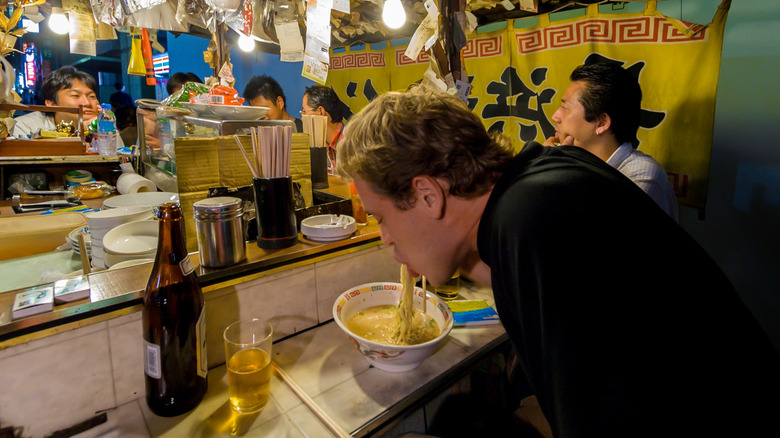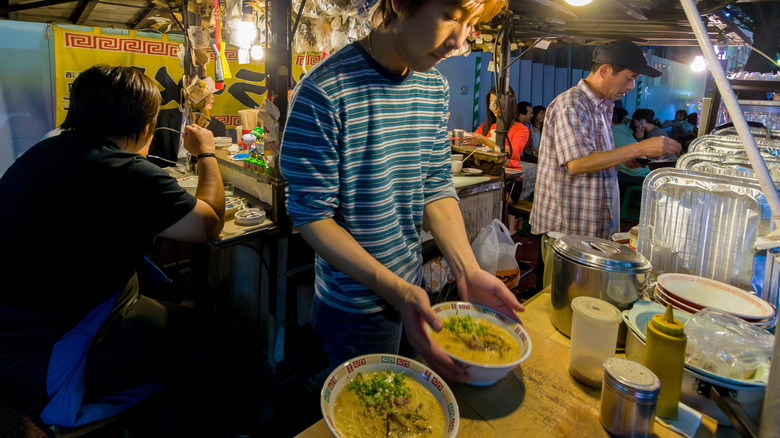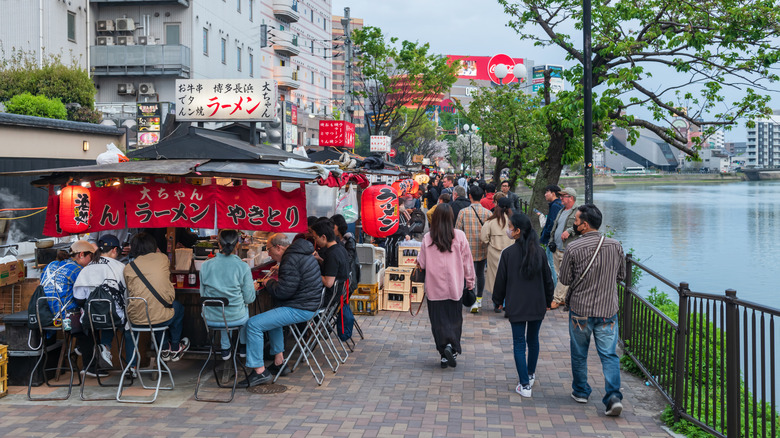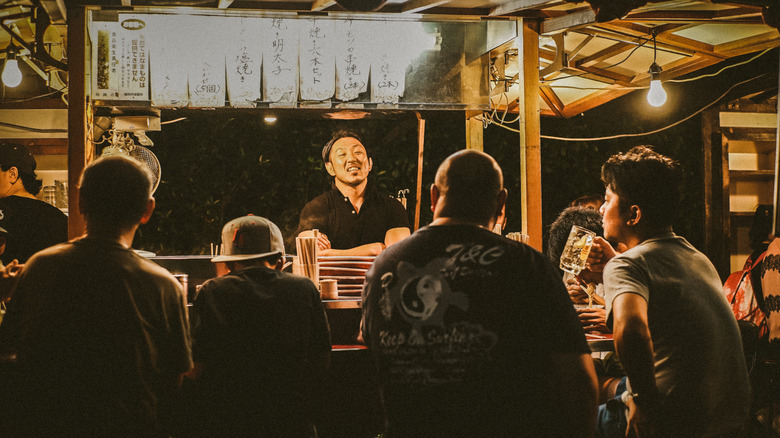Beyond Japan’s capital of Tokyo — famed for its magnificent city skyline, busy intersections, and frenetic nightlife — are plenty of underrated cities that tell their own unique stories. Japan has a number of stunning destinations that won’t break the bank, if one is willing to venture away from Tokyo’s comforts. While culture lovers head to Kyoto for its temples or to Hakone for its hot springs, foodies gravitate toward Fukuoka for its yatai — food stalls temporarily set up in the city streets at nightfall. These food kiosks offer a lively local dining experience with their servings of regional specialties and unforgettable dining setup. While eating and drinking in the streets is a custom locals usually frown upon, yatais seem to be an exception as a street food experience wholeheartedly embraced by locals and tourists alike.
Today, people flock to the hundred or so yatais at sundown for a sampling of famed local street food. The cramped mobile kiosks — accommodating a maximum of 10 people at best — have customers eating elbow to elbow. This shared dining experience encapsulates Fukuoka’s reputation as a friendly, welcoming, and inclusive Japanese city. Aside from the promise of gyoza or ramen, yatais are a great way to chat with locals and vendors, discover new dishes, and immerse yourself in a unique Japanese foodie adventure.
From Tokyo, it takes a little under five hours via the Nozomi Shinkansen line to get to Fukuoka’s Hakata Station at the heart of the city. Flying from Narita Airport cuts the train travel time by more than half; it’s only a two-hour-and-10 minute flight to get to Fukuoka Airport, which is a convenient seven-minute car ride away from Hakata Station and 12 minutes from the bustling Tenjin district.
Dishes to try at a Fukuoka yatai
Situated along the coast of Japan’s Kyushu island, Fukuoka’s position as a port city gave it an edge in terms of its access to neighboring Asian countries and their influences, as well as fresh seafood. Food stall culture in Japan dates back to the 17th century Edo period but carried an unfavorable reputation for what was deemed unhygienic food practices and, post-World War II, its association with the black market and food rationing. Regulations by local government in 1964 pretty much put a stop to all but Fukuoka’s yatais which continue to legally operate and thrive, saved by their owners who formed unions to keep this historical part of food culture alive.
Yatais are prohibited from serving raw food — these are regulated to fixed-location establishments — but there’s certainly no lack of food options otherwise. A must-have is the regional pride and joy, the tonkotsu ramen. Served in thick, tasteful pork broth that’s been simmered to perfection and accompanied by slices of pork and marinated eggs, the dish can be peppered with your choice of condiments from pickled ginger to chili peppers or fresh garlic, among others. Sample dishes that feature mentaiko, a Korean-influenced spicy marinated pollock roe condiment that can elevate almost any dish it’s added to, be it an onigiri, a pasta dish, a rolled omelet, or a humble rice bowl. Fukuoka’s take on hot pot, motsunabe, is a winter staple that warms the body and soul. Though its ingredients sound off-putting — we’re talking tripe and intestines — the dish wins you over with its spicy flavors and rich broth. Hop across stalls for samplings of yakitori, gyoza, or udon noodles.
Navigate these popular yatai areas
Yatai-hopping etiquette to keep in mind
Yatais are small and crowded, and the experience of eating meals next to strangers has naturally formed an informal code of rules and etiquette. Make sure to alert the stall owner or staff to your presence before sitting down, indicating the number of your party (small groups have a better chance to be seated) to check if they can accommodate you. There is also an expectation to order a drink alongside your dish.
Since turnover is quick, lingering is not an option: Be mindful of the queues of diners awaiting their turn for a seat. Fully embrace the yatai adventure by sampling different dishes from various food stalls. To prove the science that traveling alone can actually make you a nicer person, strike up a conversation with your fellow yatai diners — half of the fun is in the shared human experience. Finally, leave bulky bags and luggage in your hotel before heading out to a yatai, as there will be virtually no place to store them in a crowded kiosk. And while some yatais may accept credit cards, cash is still the safest way to pay for your meals. Keep in mind that bad weather can also affect yatais from operating, so check the forecast before heading out.





